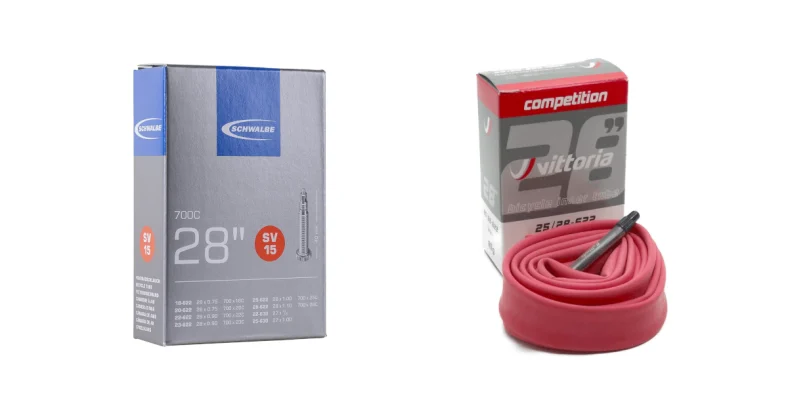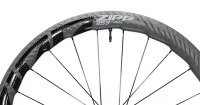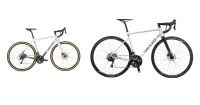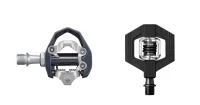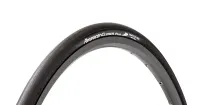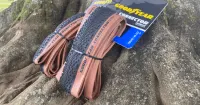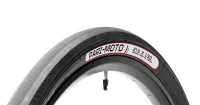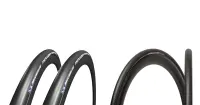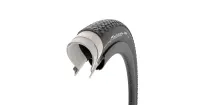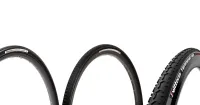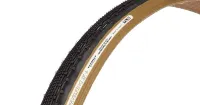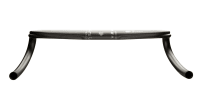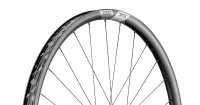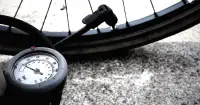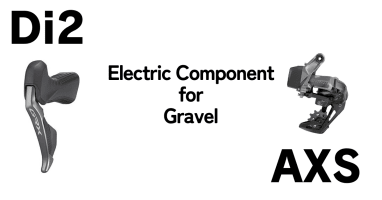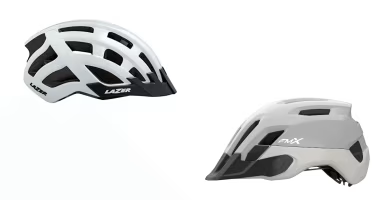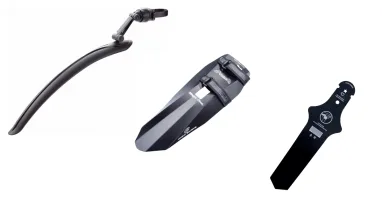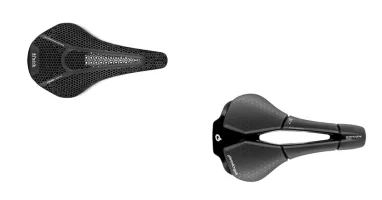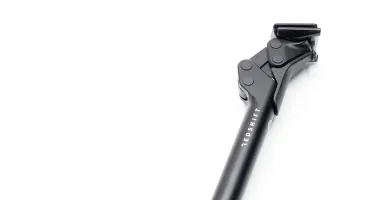Language Menu
- 日本語
- English
Advantages and disadvantages of operating a grave bike with clinchers
The following is a summary of the advantages and disadvantages of installing clincher tires on gravel bikes, where tubeless tires are the norm.
Modified at: 2023.11.26Posted at: 2022.11.1
Table Of Contents
- Advantages
- Easy to operate and maintain
- Easy to fix a flat tire
- Disadvantages
- High puncture risk
- Low-pressure operation is not possible
- Good scene to operate a gravel bike with a clincher
- Daily/town riding
- Cycling on mainly paved roads
- If you are buying gravel tires now, “tubed operation of tubeless tires” is also possible.
Advantages
Easy to operate and maintain
Today, clincher tires are the mainstream in the road bike scene, but before that, tubular tires were the mainstream on road bikes, especially in the racing scene.
What replaced clinchers with tubulars was ease of operation and maintenance. With fusible tires, it is very easy to fit the tire with bare hands, insert the tube, inflate, and setup is complete.
In terms of maintenance, as long as you check for foreign objects around the tire and change the tube periodically, you can operate for quite a long time with no maintenance.
However, in terms of ease of maintenance, tubeless tires are just as easy once they are set up, in the sense that they only need to be refilled with sealant periodically.
Easy to fix a flat tire
The clincher’s advantages are probably most apparent when repairing a flat tire.
Since all you have to do to fix a puncture on a clincher is to remove the tire from the rim and replace the tube, even beginners can easily handle it, and if there is no problem with the tire, you only have to pay for a new tube.
Some people say, “I don’t want to carry more luggage because I have to carry a tube with me,” but it is safer to carry a tube even if you are riding tubeless, so the conditions are the same.
Disadvantages
High puncture risk
One of the biggest disadvantages of clinchers is the tube factor punctures. So the “tube makes operation easier” is also a disadvantage.
Tube-factor punctures include “rim-striking punctures,” in which the tube engages with the rim over bumps and other obstacles, resulting in a hole, punctures in the tube due to wear of the tire and tube, and air leaks due to deterioration of the root of the tube valve.
With tubular tires, tube-derived punctures are rare because the tube is encased in the tire, and with tubeless tires, there are zero tube-derived punctures because the tube does not exist in the first place.
Tube-derived puncture risk is especially high on gravel bikes, where the tires are subjected to strong impacts from bumps and gravel.
Low-pressure operation is not possible
One of the reasons for choosing tubeless tires is that they can be operated at low pressure. On a bike that is designed to be ridden over rough terrain, such as a gravel bike, low-pressure tires can absorb vibration from the road surface by cushioning it.
On clinchers, which contain a tube, low pressure increases friction between the tire and tube and can easily cause a rim-crushing puncture, so it is normal to operate at high pressure on road bikes and the like.
However, a larger tire can be operated at lower pressure compared to a road bike, such as 40 PSI.
Good scene to operate a gravel bike with a clincher
Daily/town riding
In the case of everyday riding and city riding, since most of the time you ride on paved roads, riding comfort is not bad even if you do not use low-pressure operation as with tubeless bikes.
In addition, for daily/street riding, it is important to have a high utilization rate as an everyday footwear, so it is not realistic to repair a bike covered with sealant in case of air leakage or puncture, as tubeless bikes are used to do.
Cycling on mainly paved roads
If you are cycling mainly on paved roads, either tubeless or clincher is fine. However, for long rides, many cyclists choose to use clinchers because the shorter time required to repair a puncture means longer rides and less stress.
The quality of tubeless wheels and tubeless tires has improved dramatically in the past few years, and tubeless tires can withstand long rides, but the trend toward clinchers will probably continue for a few more years.
If you are buying gravel tires now, “tubed operation of tubeless tires” is also possible.
Currently, wheel rim and tire compatibility is easy to occur with tubeless (still, it has decreased considerably in the last few years), but if you ride gravel, you may have a desire to go tubeless.
In this sense, instead of choosing a clincher for the time being when choosing a tire, you can dare to put an inner tube in a tubeless tire and operate it as a “tubed” tire.
If you try a tubeless tire and it does not suit you, you can go with a tubed tire, and if there are no problems with tubeless tires, you can go with tubeless tires.
Gravel Bike Lightweighting Guide
This is a lightweighting guide for gravel bikes, which have a higher body weight than road bikes, to make them lighter and ride more like road bikes.
Advantages and disadvantages of carbon wheels on gravel bikes and how to choose
Carbon wheels are becoming a major player in road bikes that pursue speed and high efficiency. They also contribute to weight savings on gravel bikes, which have different riding conditions than paved roads, but there are some things to keep in mind when choosing them.
How to convert a gravel bike into a road bike
A gravel bike, a derivative of a road bike, can be ridden on paved roads without modification. However, when converted to a road bike, they can be "ridden more like a road bike.
And lightweight too! Summary of the best binding pedals for gravel bikes
Gravel bike binding pedals need to be chosen from a different perspective than road bikes. Moreover, it is a cosmetic customization because the choice of binding pedals can reduce the weight of a heavy gravel bike.
How to choose gravel tires for those who just want to go fast
Gravel bikes are said to be slower than road bikes. If you want to go faster on a gravel bike! If you want to go faster on a gravel road bike, you can make it lighter and faster by simply customizing the tires.
How to reduce weight and cost-effective upgrades for gravel bikes
If you want to "lighten up your ride" on a gravel bike with a heavy body weight, the best way is to lighten the body weight. We have compiled a list of ways to lighten the weight of your gravel bike and cost-effective upgrades.
Advantages and disadvantages of slick tires on gravel bikes
Slick tires are the standard for road bikes on paved roads. We have summarized the advantages and disadvantages of daring to install slick tires on gravel bikes, which are often equipped with knobbed gravel tires.
Are gravel bikes really heavy? We investigated whether
Gravel bikes have been rapidly gaining popularity over the past few years. However, we often hear people say, "gravel bikes are heavy". In this issue, we investigate whether gravel bikes are really heavy and why.
Let's master gravel tires!
Gravel tires are a characteristic of gravel bikes. One of the interesting aspects of gravel bikes is that depending on what tires are set and at what air pressure, the ride and comfort can vary greatly.
Advantages of MTB tires on gravel bikes and how to choose them
Gravel tires are getting fatter every year, but MTB tires are still the best choice for serious dirt road riding. The following is a summary of the advantages of installing MTB tires on gravel bikes and how to choose the right ones.
Choosing Gravel Tires for Road Bikes
Even if your road bike is mainly used for riding on paved roads, you can enjoy gravel riding by installing gravel tires. In this issue, we have compiled a list of gravel tire selection and precautions for road bikes.
How to choose gravel tires for those who just want to go fast
Gravel bikes are said to be slower than road bikes. If you want to go faster on a gravel bike! If you want to go faster on a gravel road bike, you can make it lighter and faster by simply customizing the tires.
The Perfect Guide to Choosing Gravel Tires
One of the most fun and most affordable customizations for gravel bikes is changing tires. However, gravel bikes, by their very nature, are also the most difficult to choose tires for. In this article, we will thoroughly explain how best to choose tires for gravel bikes.
ETRTO standards for 650B tires and their inch counterparts
Many gravel bike riders love 650B tires. However, when looking for a 650B tire, the various size designations can be confusing. In this article, we will look at the different size designations for 650B tires and check each designation with its corresponding chart.
Is tubeless the best? Which type of gravel tire is best?
Tire selection is one of the most enjoyable and difficult aspects of gravel bike customization. In this article, we will look at the differences between tire types and the types of tires to choose for your gravel bike, along with their advantages and disadvantages.
What is a gravel tire? Definition of Gravel Tire
Gravel tires are rapidly gaining popularity in the road bike community. What is a gravel tire and how is it defined?
Which type is best? Get to know the different types of gravel tires.
Gravel tires are in between the properties of road tires and MTB tires, and there is a lineup of tires with both properties. In this issue, we will introduce the different types of gravel tires and how to choose and customize them for different uses.
Advantages and disadvantages of slick tires on gravel bikes
Slick tires are the standard for road bikes on paved roads. We have summarized the advantages and disadvantages of daring to install slick tires on gravel bikes, which are often equipped with knobbed gravel tires.
Why so many gravel bike users love tubeless tires? Advantages and disadvantages
One of the most popular customizations for gravel bikes is to convert the tires to tubeless. The following is a summary of the advantages and disadvantages of tubeless and why it is a favorite on gravel bikes.
Customization for comfort on rough roads
Gravel bikes on gravel roads, for example, are subject to more vibration and shock from the road surface than those on paved roads. Optimizing for rough roads can make riding more comfortable.
Advantages and disadvantages of suspension and seat post on gravel bikes
When riding a gravel bike over rough terrain like MTB, you want suspension. An easy way to add suspension to your gravel bike is with a suspension seatpost.
How to add suspension to a gravel bike
Gravel bikes can be ridden on unpaved roads, but the basic standard is a "rigid fork" without suspension. In this article, we summarize how to add suspension to a gravel bike without suspension.
How should you decide on a position for a gravel bike, which is intended to be between a road bike and a MTB?
Why so popular on gravel bikes? Advantages and disadvantages of flared handles and how to choose
Flared handlebars are being increasingly adopted on gravel bikes. We will look at what flared handlebars are and why they are so popular, starting with their advantages and disadvantages.
How to customize a gravel bike with MTB wheels and how to choose
Gravel bikes can also enjoy MTB-like riding with fat tires. If you are going to enjoy riding on rough roads, one way to have fun is to customize it with MTB wheels to make it more MTB-like.
The Perfect Guide to Choosing Gravel Tires
One of the most fun and most affordable customizations for gravel bikes is changing tires. However, gravel bikes, by their very nature, are also the most difficult to choose tires for. In this article, we will thoroughly explain how best to choose tires for gravel bikes.
Is tubeless the best? Which type of gravel tire is best?
Tire selection is one of the most enjoyable and difficult aspects of gravel bike customization. In this article, we will look at the differences between tire types and the types of tires to choose for your gravel bike, along with their advantages and disadvantages.
Ride more comfort! Ride gravel bike with proper air pressure!
There is a "proper air pressure" for bicycle tires. This section summarizes what the correct air pressure is, how to check it and how to get the correct air pressure, and the changes in riding that can be achieved by changing the air pressure.
What kind of road is gravel? The kind of riding a gravel bike is designed to do
What kind of "gravel" roads can gravel bikes be ridden on? We have compiled a definition and a summary of how the manufacturer expects you to ride it, and how it is not expected to be ridden.
